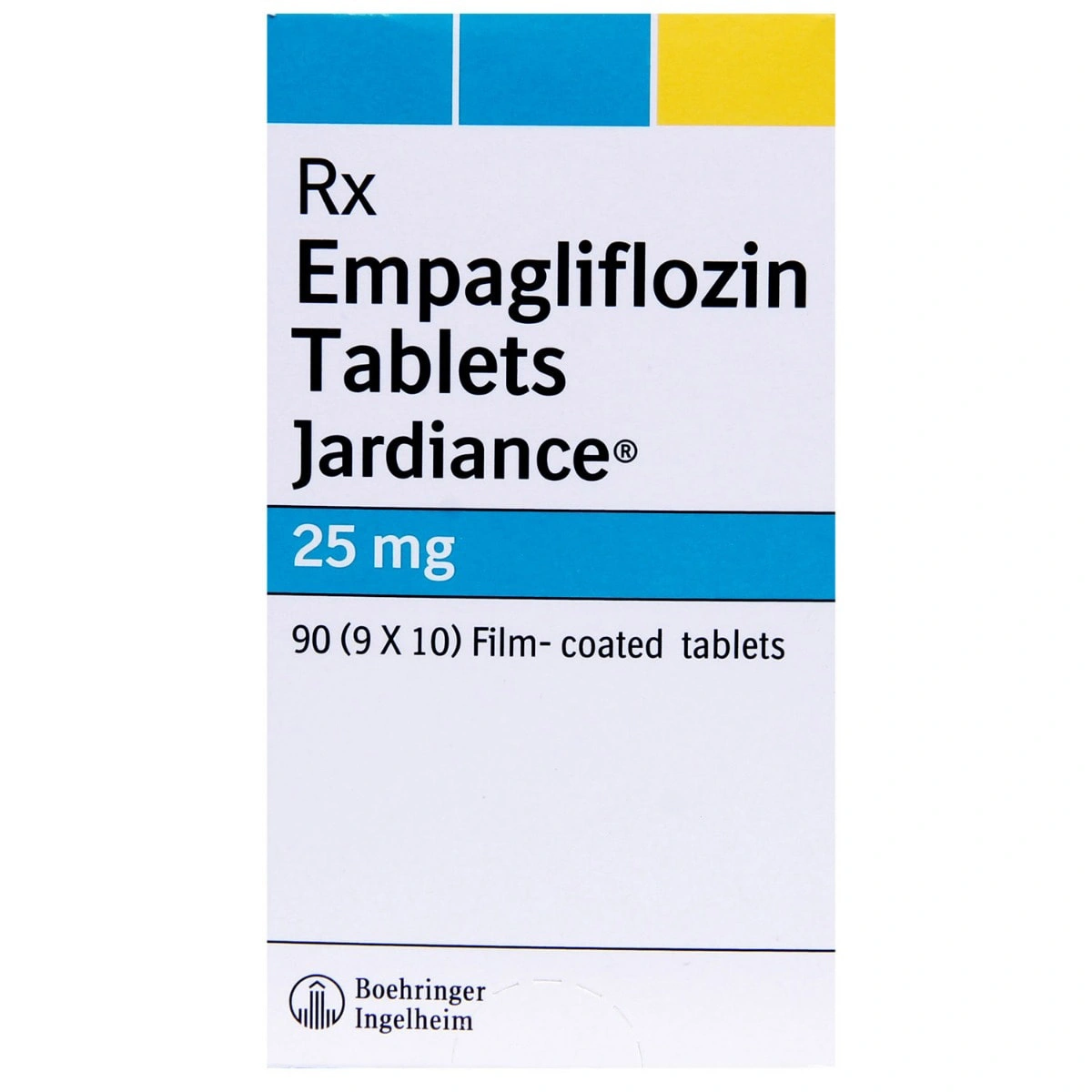“Jardiance 25 mg: Uses, Benefits, and Side Effects”
What is Jardiance 25 mg?
Jardiance (empagliflozin) is a prescription medication primarily used to:
- Lower blood sugar levels in adults with type 2 diabetes mellitus.
- Reduce the risk of cardiovascular death in adults with type 2 diabetes and established cardiovascular disease.
- Treat heart failure, including reduced and preserved ejection fraction (HFrEF and HFpEF), even in people without diabetes.
Mechanism of Action
Jardiance works by inhibiting SGLT2, a protein in the kidneys that reabsorbs glucose into the blood. By blocking SGLT2:
- Excess glucose is excreted through urine.
- Blood sugar levels decrease.
- It also promotes weight loss and blood pressure reduction.
- In heart failure, it helps by reducing fluid overload, improving cardiac function, and possibly offering renal protection.
Indications / Uses
- Type 2 Diabetes Mellitus
- As an adjunct to diet and exercise to improve glycemic control.
- Can be used alone or in combination with other diabetes medications.
- Cardiovascular Risk Reduction
- Reduces the risk of cardiovascular death in adults with type 2 diabetes and established cardiovascular disease.
- Heart Failure
- Approved for reducing risk of cardiovascular death and hospitalization for heart failure in adults with HFrEF or HFpEF, regardless of diabetes status.
Dosage and Administration
- Standard Starting Dose: 10 mg once daily
- Maximum Dose: 25 mg once daily (can be increased based on response and tolerance)
- Take in the morning, with or without food.
- Renal Function must be assessed before starting and periodically during treatment.
Side Effects
Common Side Effects:
- Increased urination
- Genital yeast infections (more common in women)
- Urinary tract infections (UTIs)
- Thirst
- Nausea
- Low blood sugar (when combined with insulin or sulfonylureas)
Serious Side Effects:
- Ketoacidosis (even with normal blood sugar)
- Severe dehydration
- Hypotension (especially in older adults or those on diuretics)
- Kidney problems
- Fournier’s gangrene (rare but life-threatening genital infection)
- Increased LDL cholesterol
Precautions and Warnings
- Not for use in Type 1 diabetes or to treat diabetic ketoacidosis (DKA).
- Use cautiously in:
- Patients with kidney impairment
- History of frequent UTIs or yeast infections
- Patients on diuretics (risk of dehydration and low BP)
- Elderly patients (risk of volume depletion)
- Monitor:
- Renal function (eGFR)
- Blood glucose levels
- Ketones (especially during illness, surgery, or fasting)
Drug Interactions
May interact with:
- Diuretics (increase risk of dehydration and low BP)
- Insulin or sulfonylureas (increase risk of hypoglycemia)
- RAAS inhibitors (like ACE inhibitors and ARBs) – monitor kidney function closely
Pregnancy and Breastfeeding
- Not recommended during pregnancy, especially in the second and third trimesters, due to potential fetal harm.
- Unknown if it passes into breast milk; use only if clearly needed.
Storage
- Store at room temperature, away from moisture and heat.
- Keep out of reach of children.








Reviews
There are no reviews yet.